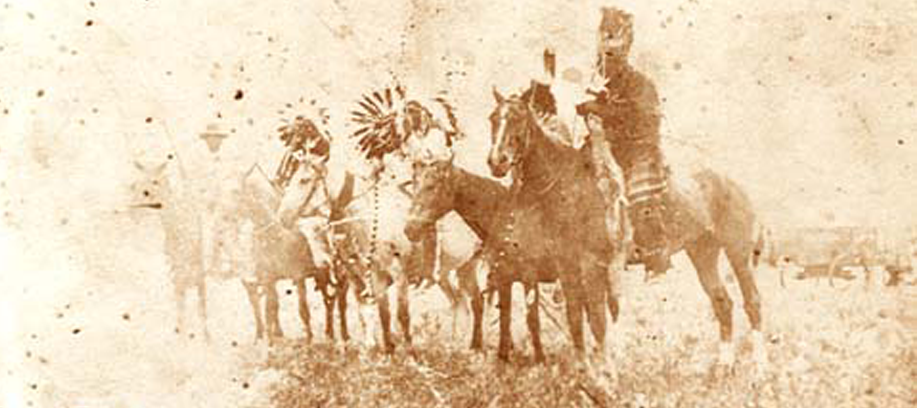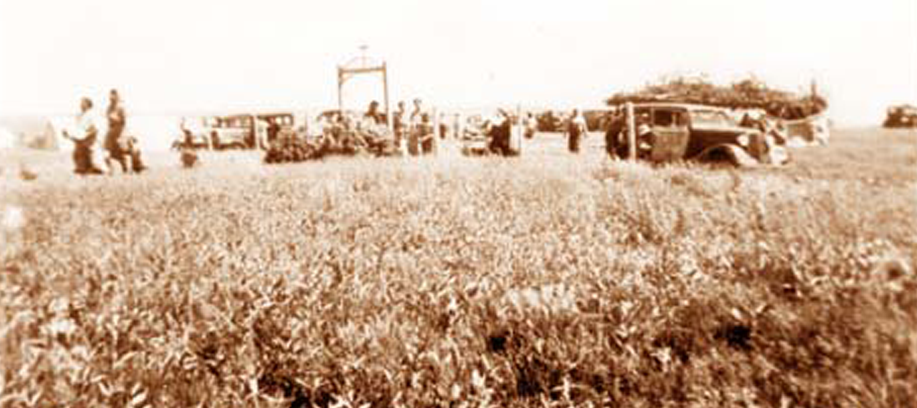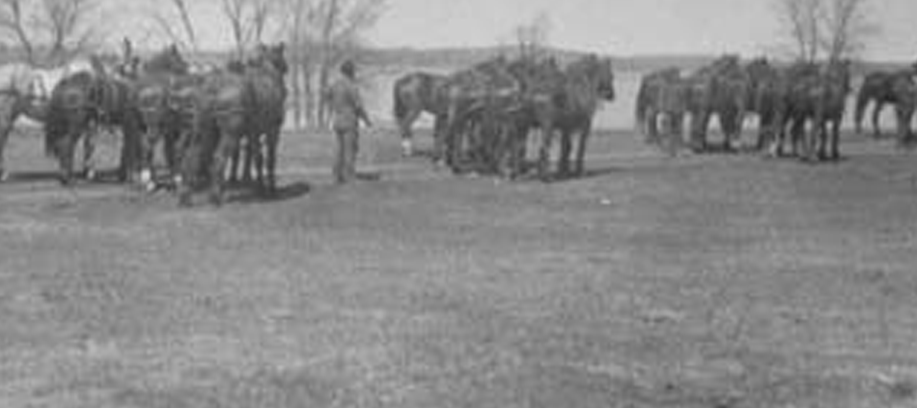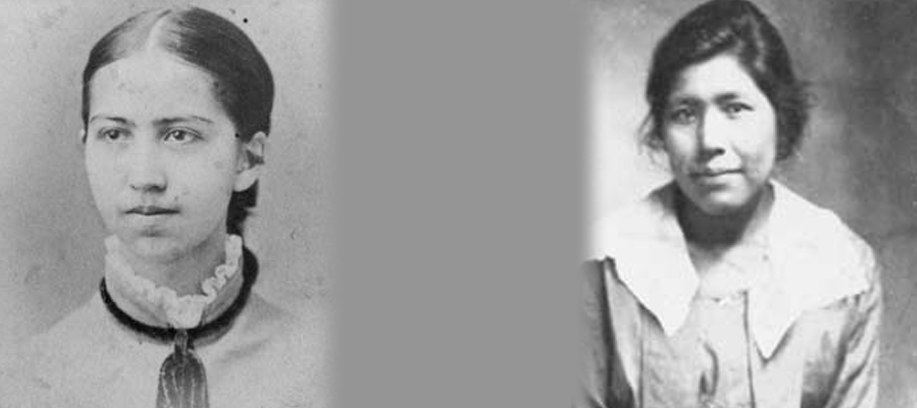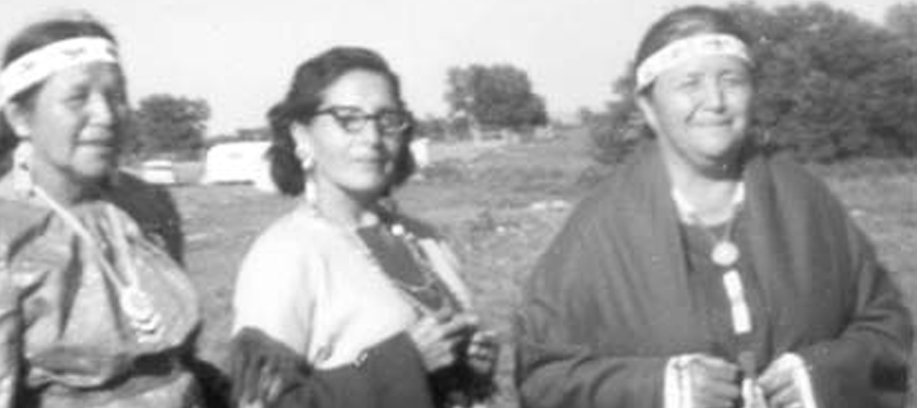| Tribal History | Oyate (Our People) | Scenic Byway | Attractions | Travel | Hunting & Fishing |
TRIBAL HISTORY
The Sisseton–Wahpeton Oyate are two combined bands and two sub-divisions of the Isanti or Santee Dakota (Sioux) people located on the Lake Traverse Reservation in northeast South Dakota. The current enrollment of the tribe is at approximately 13,000 members among seven districts located in different areas across the reservation. There were 9,894 living on the reservation circa 2004.
The tribe’s districts are
1. Big Coulee, Iyakaptapi which means ‘to ascend or climb’.
2. Buffalo Lake, Karnataka Bde which means ‘Buffalo Lake’.
3. Enemy Swim, Toka Nuwan which means ‘Enemy Swim’.
4. Lake Traverse, Bde Hdakiya which means ‘Lake Traverse’.
5. Long Hollow, Kaksiza Hanska which means ‘longest hollow in the area, Long Hollow’.
6. Old Agency, Ateyapi Tipi which means ‘Old Agency’
7. Veblen, Heipa which means ‘hill head, end of the hills, head of the hills’.
On July 23rd, 1851 the Treaty of the Traverse de Sioux was formed between the United States government, and the (Dakota) Sioux of the Minnesota Territory. The treaty was instigated and propagated by the territorial governor, Alexander Ramsey and Commission of Indian Affairs, Luke Lea, in order to obtain the rich agricultural lands that were in Minnesota.
Large tracts of land were ceded from Iowa to the Canadian border, yet bands such as the Sisseton and Wahpeton were hesitant to disinherit so much, yet reluctantly did so per potential threat from the federal government as shown during the 1825 Black Hawk War where the Indian parties involved were also hesitant to negotiate. Included in the treaty stipulations was a monetary amount of $1,665,000 in cash and annuities and reservations established at the Upper Agency near Granite Falls, MN and another at the Lower Agency near Redwood Falls, MN, stretching from 20 miles in width to about 70 miles in length.
The Upper Sioux were more content as the boundaries contained some of their old villages and was more familiar hunting and fishing in that area. The Lower Agency however had displaced many from their traditional woodland areas which was a source of discontent. Also, another stipulation was that of a “traders-paper” rider which allocated $400,000 of the annuities to mixed bloods and traders who had claims against the Indians.
By 1858, Dakota leaders went to Washington D.C. again to sign two more treaties ceding the reservation north of the Minnesota River. With the on-rush of white settlers as well as the desire for more land by the federal government, along with their failure to pay the promised annuities, as well as the reduction of lands, the pressure to conform to Christianized ways, loss of hunting and fishing land, and the overall discontent of the Dakota bands would be the catalyst that would lead to the plains Indian Wars which would span the next 30 years.
In August of 1862, unrest among eastern Santee bands was ever prevalent and came to a climax with open combat in what would be called Dakota War of 1862, the Dakota Conflict or Sioux Uprising. On August 4th, 1862 the Sisseton and Wahpeton bands were able to obtain food and supplies. However on the 17th the Mdewakanton and Wahpekute bands were denied. Indian Agent and Minnesota State Senator Thomas Galbraith refused to distribute supplies without payment. At a summit to resolve the matter, Dakota leaders asked trader Andrew Myrick to back their cause. His answer to Indians was: “So far as I’m concerned, if they are hungry, let them eat grass or their own dung.” This statement caused outrage among the Dakota people.
The day before, August 16th, monies arrived in St. Paul for distribution and were sent to Fort Ridgely on the 17th, but by then it was too late. The actions of four Dakota “Aki-ci-ta” or warriors at a settlement at Acton in Meeker County is considered by historians the beginning of the conflict. At Acton, a skirmish between white settlers and the Dakota took place due to the young “Aki-ci-ta” reportedly stealing eggs (as is the story told by the history books). It resulted in the death of five whites. Soon conflicts erupted elsewhere around the region. Initially, the Dakota had victories at the Battle of Redwood Ferry, assault on New Ulm, and the Battle of Birch Coulee as well as a minor loss at the Battle of Fort Ridgely, with whites taking heavy losses in that victory. Dakota “Aki-ci-ta” also laid siege to Fort Abercrombie for six weeks as well as disrupt supply lines and shipping from the north and Canada and couriers heading to St. Cloud and Fort Snelling. Large scale combat ended on September 26th, 1862 (yet skirmishes continued in the weeks following) when six companies of Minnesota militia and an artillery unit attacked Dakota positions at the Battle of Wood Lake. Three days later, Dakota forces surrendered at Camp Release where 269 POW’s were released to the troops there led by Col. Henry Sibley. Although still debated today, there were anywhere between 800 to more than 1,000 civilian and military casualties, but there are no ways to accurately determine the actual number.
In the wake of the war, the Dakota were severely punished with 303 convicted of war crimes and sentenced to death. Of the 303, 38 men were hung the day after Christmas, in the largest mass execution in United States history. Efforts were undertaken to revoke the treaties, abolish the reservation, and expel remaining Dakota people from Minnesota entirely. Bounties of $25 were put on any Dakota found within the boundaries with the exception of 208 families of Mdewakanton who were considered “friendly.” Soon after, the further conflicts known in combination as the Indian Wars would proceed south and west ending with the Wounded Knee Massacre in 1890. Gabriel Renville 1824-1892, chief scout for General Sibley was appointed head chief of the Sisseton-Wahpeton bands by the War Department in 1866. In 1867 he was appointed Chief for life by members of the Sissetowan band.
The Lake Traverse Reservation and its boundaries were established by the Lake Traverse Treaty of 1867. Between 1884 and 1913 the tribe’s government was based upon the concept of the Soldier’s Lodge, however due to external pressures from federal Indian agents and the missionaries, as well as internal turmoil the system was changed in 1913 to an advisory committee which was the basis of government until 1946. In 1934, the tribe was urged to adopt the provisions of the Howard-Wheeler Act, also known as the Indian Reorganization Act. By 1946, the current system of by-laws and tribal government was established at Old Agency Village, returning governance to the Sisseton-Wahpeton Sioux Tribe it cited the authority to do so established by the Lake Traverse Treaty of 1867. The Sisseton Wahpeton Oyate were known as the Sisseton Wahpeton Sioux Tribe from 1946 (and briefly in 1992 the Sisseton-Wahpeton Dakota Nation) until the 2002 general elections. It was then a measure passed altering Sioux Tribe to the traditional Dakota word “Oyate,” meaning people or nation.

